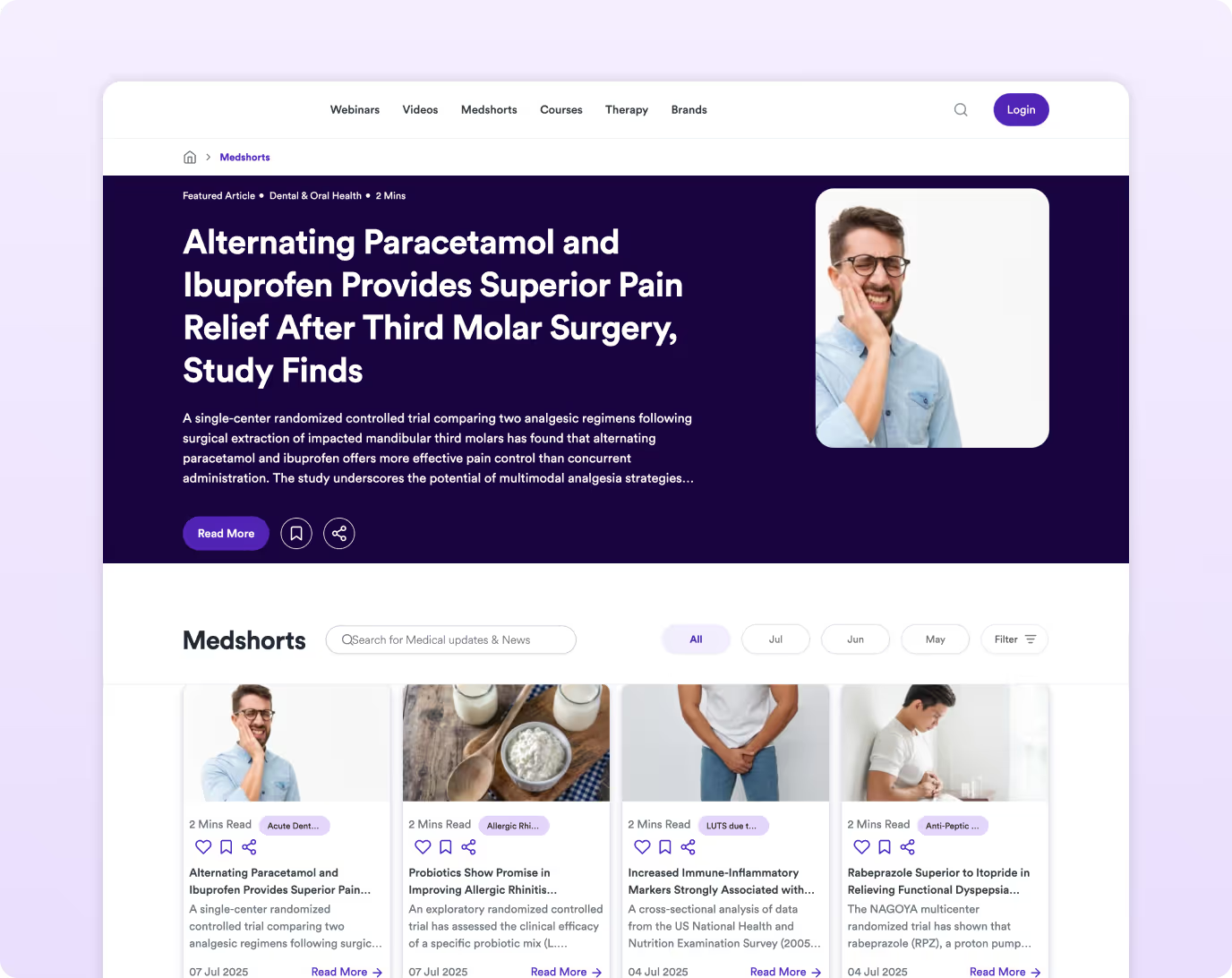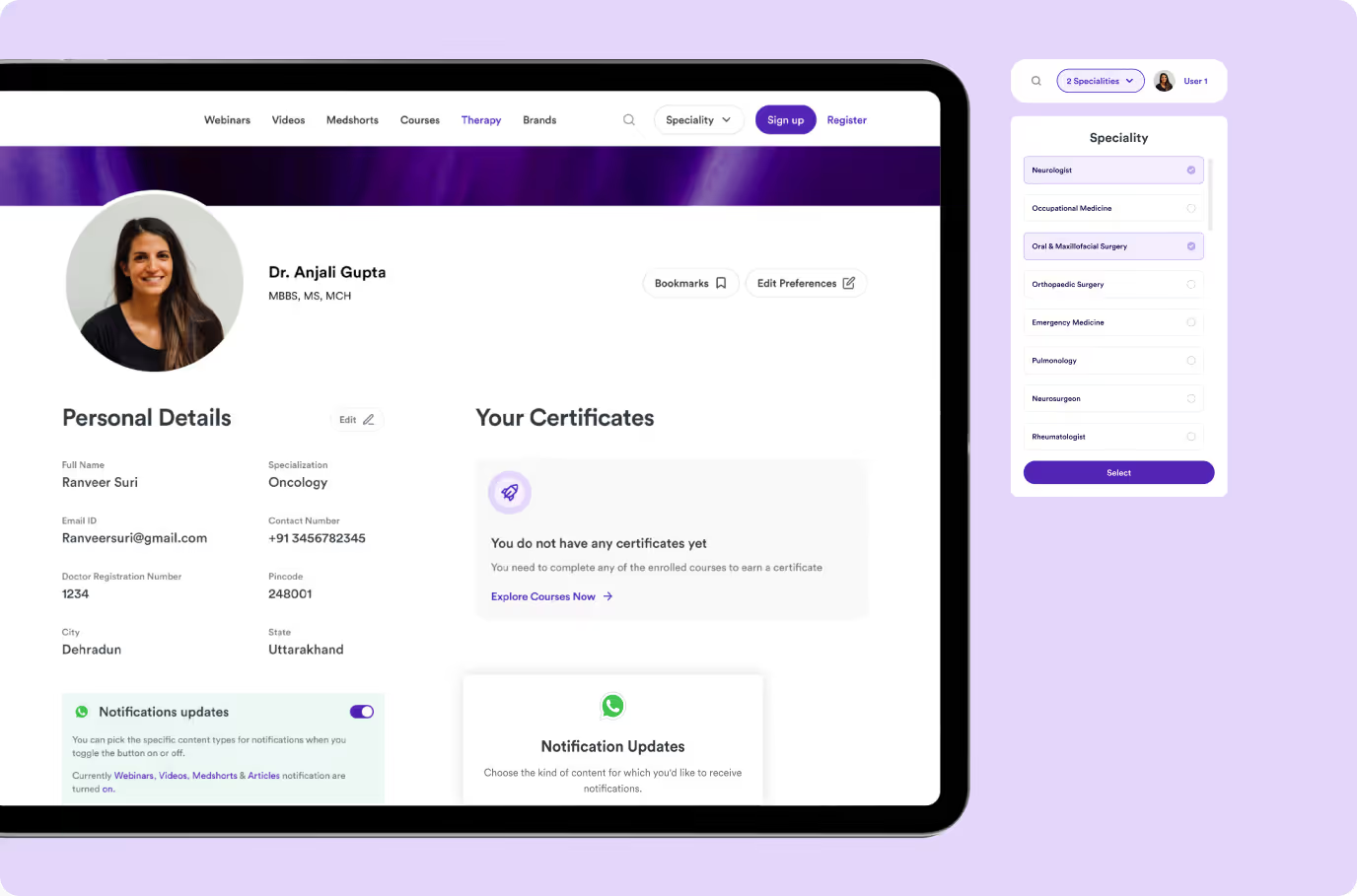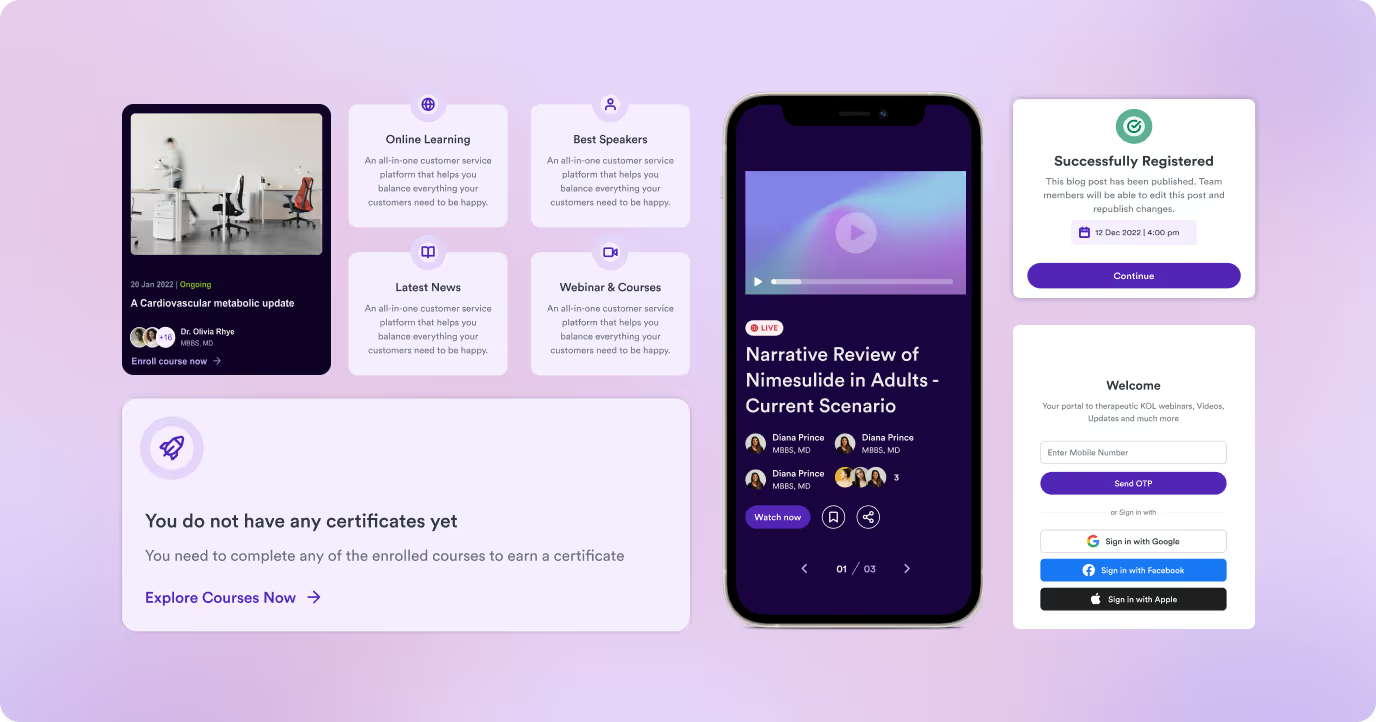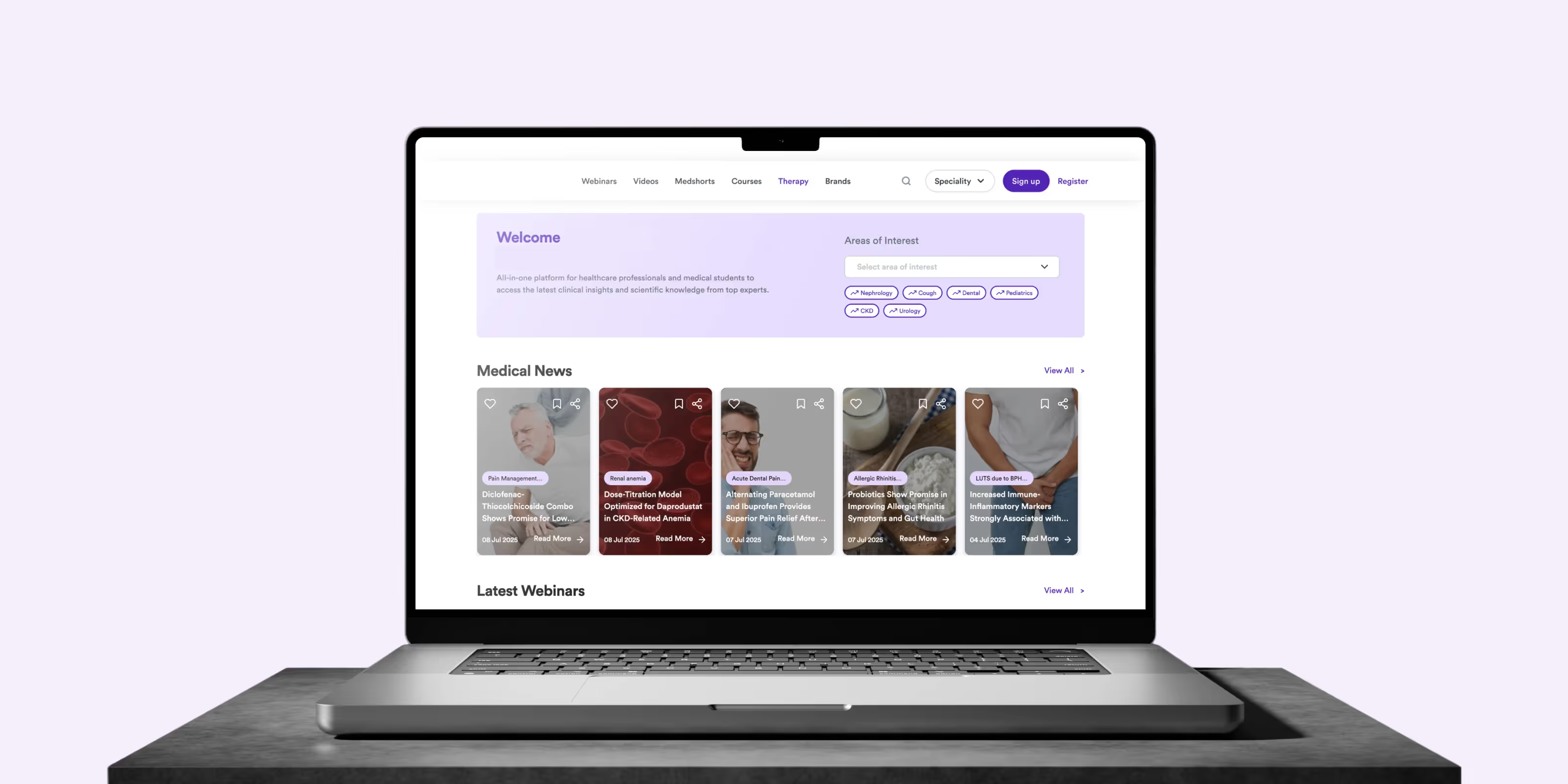Doctors save lives. Nurses, specialists, and frontline health workers carry the weight of care every day. When something changes in treatment protocol, when new research emerges, or when a safety alert goes live, these professionals need to know. And they don’t have time to dig through broken systems or outdated dashboards to find it.
To support this, a multinational pharmaceutical company built a digital learning platform for medical professionals. The goal was clear: provide reliable, easy access to high-quality educational content.
Over time, the platform became difficult to manage, from poor search and scattered content to clunky workflows, manual video handling, and access issues that slowed everyone down.
We partnered with the teams behind the platform to address these issues and reimagine it around clarity, speed, performance, and long-term maintainability. The solution focused on consistent content modelling, streamlined workflows, and a scalable, component-based design system, so the right information could always reach the people who need it, when they need it most.
The challenge: too much content, not enough direction
The organisation’s digital library served a broad set of healthcare professionals across roles and regions. Knowledge content included video explainers, clinical articles, live sessions, and CPD-certified modules.
But the platform was built on a disconnected set of stacks. Key issues included:
- Search delivered inconsistent results
- Editorial teams duplicated work across siloed systems
- There was no shared taxonomy or categorisation logic
- Editorial workflows lacked visibility and version control
These challenges were operational and experience-related. The platform hadn’t been designed for the realities of publishing regulated learning content, or for the way healthcare professionals consume it.
Every moment that outdated content remained live was a moment when a healthcare professional might miss a vital update. And in their world, every detail matters. These are people who show up every day with unwavering commitment to their patients, often under immense pressure and with little time to spare.
The mission was clear: to build a platform that respects their reality. It had to be fast, intuitive, and trustworthy. A space that empowers them with the knowledge they need, exactly when they need it, so they can keep doing what they do best: saving lives and making a difference.
What we implemented
This was a complete rebuild, grounded in workflow clarity, clinical relevance, and system stability- the core issues holding the system back.
We addressed the key failure points and aligned the platform accordingly to reflect how both medical professionals and content teams work.
Structured content, aligned to clinical relevance
We introduced a shared taxonomy, grouping all content by medical domain, format, and target audience. Each content type, like articles, videos, events, and modules, now lives in a unified system and carries a taxonomy reference, making it easier for users to discover what they need and for editors to use the same tags, and users get accurate, predictable results.
To break down silos, we set up two types of content in Drupal and added a "both" tag for videos. This made them show up consistently across formats and cleaned up the URLs.
Reusable components across all content types
We replaced custom pages with a component-based publishing system grounded in Atomic design principles. Editors now use pre-approved templates and building blocks. This ensures consistent layout, faster production, and easier updates. No more visual drift or manual formatting.
One publishing workflow
We connected the backend CMS to the learning front-end through a clean API integration that supports all publishing actions: create, update, approve, publish, and archive.
Content created in Doconnect now flows seamlessly through the system via APIs, enabling cross-platform publishing and synchronisation. User interactions, such as opens and ratings, are tracked to improve engagement and inform ongoing content optimisation.
Centralised video asset management
Video content was migrated to Brightcove and integrated with the CMS through a control module featuring customised sync logic. This ensured seamless video management, prevented duplicates, and eliminated manual embed workarounds.
Seamless migration for existing users
We integrated the platform with Auth0 and preserved all existing user credentials. Doctors and nurses did not have to re-register or reset passwords. Roles, access levels, and permissions are carried over without friction.
New users complete a simple form, and their data is instantly synchronised between Drupal and Auth0, ensuring a consistent user experience across systems.


Results
What once took days now happens in hours. Publishing timelines have been streamlined, with no need for engineering support or multi-system coordination. Content teams work independently and release updates quickly. Safety communications, training modules, and clinical content reach the field without delay. In an industry like healthcare, where timing, accuracy, and compliance directly impact patient outcomes and regulatory performance, this speed is a real advantage.
All content is now managed in one place. Search is filtered by speciality and relevance, so healthcare professionals see only what’s current and approved. This improves accuracy and supports regulatory consistency across global markets.
The user experience is straightforward. Returning users keep their preferences and access levels. New users onboard easily and find what they need without extra support. Authentication is simple. That clarity removes friction and increases completion rates. For healthcare professionals, this means better access to critical information without losing clinical time.
On the back end, content teams now follow one publishing workflow with built-in version tracking and transparent approvals. Review cycles are faster. Ownership is clear. Audit readiness is automatic. Editorial and regulatory teams have the visibility they need without slowing things down.
Content is organised, keeping HCP-facing content separate from general or patient materials. That structure supports compliance and reduces risk. The platform also enables personalised learning and real-time engagement tracking, giving teams insights they can act on and helping them focus efforts where it counts.
It is a strategic shift in how regulated content is created, managed, and delivered. It reduces operational risk, accelerates delivery, and ensures critical updates reach the right people at the right time. Most importantly, it gives healthcare providers more time to focus on care, while staying aligned with evolving clinical and regulatory standards.

Conclusion
Accurate information must reach the right people without delay. Even high-quality content becomes ineffective when hidden behind inconsistent systems or fragmented workflows.
We didn’t just improve the look and feel of a learning platform. We rebuilt its foundation.
By removing barriers to access and delivery, we’ve created a system that supports faster learning, smoother operations, and more confident learning and decision-making.
Content reaches the right users faster. Internal teams work efficiently, with greater visibility and control. Every element of the system is designed to support clinical relevance and long-term maintainability.
This is what a healthcare learning platform should deliver as standard. If we expect healthcare professionals to keep up with what matters, we owe them the digital systems that don’t slow them down.

